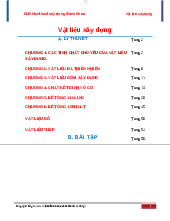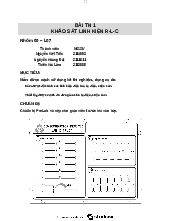


Preview text:
lOMoARcPSD| 36991220 VẬT LÝ BÁN DẪN
Chapter 2. Production Engineering by Mary Gonzalez Quiz Question 1.
In horizontal wells the skin effect considers the permeability anisotropy and
the likelihood of larger damage near the vertical section. Answer A- No idea B- Possibly C- False D- Maybe E- True Question 2.
The equation proposed by Joshi in 1990 refers to a horizontal well where: Answer
A- There is a pseudo steady state in the vertical plane and a mixed steady
state behaviour in the horizontal plane
B- There is a measurement of anisotropy
C- L= Total length of the horizontal section only D- All of the above E- None of the above Question 3.
From example 8: Higher horizontal well productivity can be achieved by: Answer A- Having thin formations
B- Having an overall low anisotropy
C- Having thick formations with lower horizontal & vertical permeability
D- Having a good production engineer E- Having thick formations Question 4.
Horizontal wells are proved to be excellent producers where the reservoir thickness is: Answer lOMoARcPSD| 36991220
A- Lower than 50 ft with good horizontal permeability
B- Higher than 50 ft with good horizontal permeability
C- Lower than 50 ft or higher with good vertical permeability D- All of the above E- None of the above Question 5.
In Example 8 of chapter 2, L = 2000 ft, h= 53 ft, a= 3065 ft, Iani=3, reH = 2980 ft, rw=0.328 ft
Therefore, the calculated effective wellbore radius and the resulting skin effect would be equal to: A. r’w= 143 ft and s = 6.9 B. r’w= 341 ft and s =-6.9 C. r’w= 371 ft and s =-4.5 D. r’w= 731 ft and s = 4.5 E. r’w= 137 ft and s = 5.4 Question 6.
What an effective wellbore radius represents? Answer A-
The damage in a horizontal well B- The skin effect C-
The likelihood of larger damage near the vertical section D-
Permeability anisotropy E- None of the above Question 7.
What is the definition of Anisotropy Index? Answer
A- Ratio of vertical to horizontal permeability
B- Ratio of horizontal to vertical permeability
C- The product of vertical to horizontal permeability
D- Square root of the ratio of horizontal to vertical permeability E- None of the above lOMoARcPSD| 36991220
Student Name and ID__ Trịnh Minh Đức Qu n-2014284
Total Marks (out of 70) ________nh m 9_____________________




